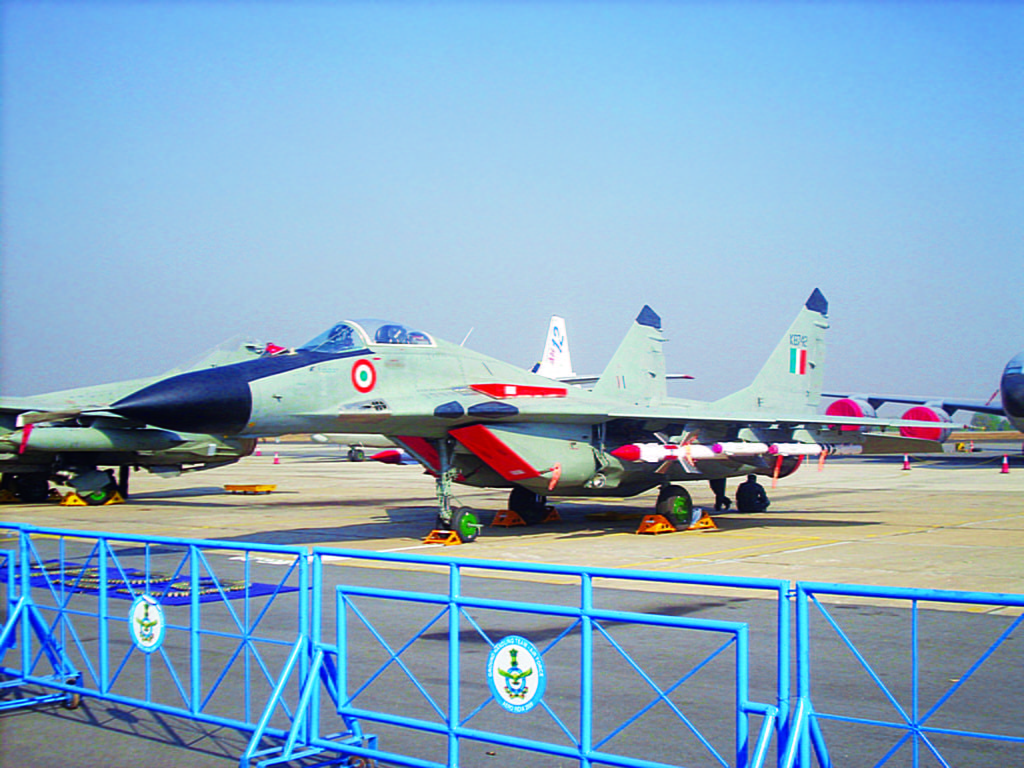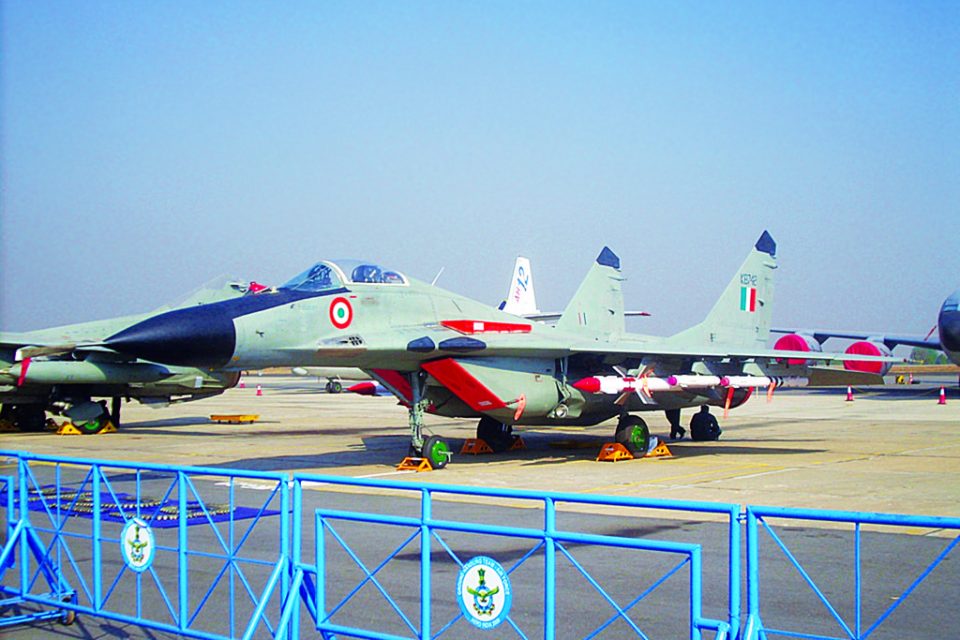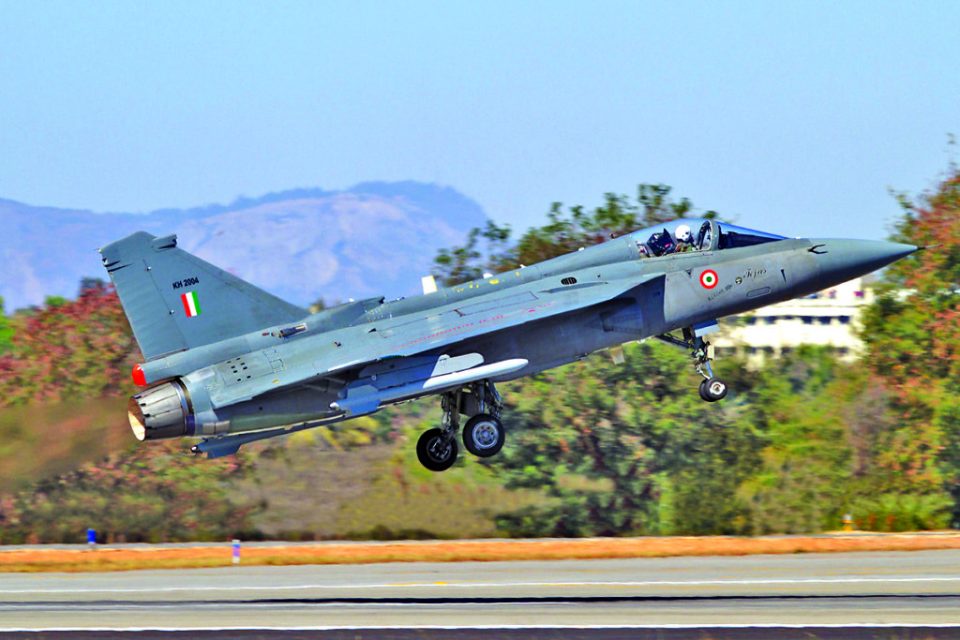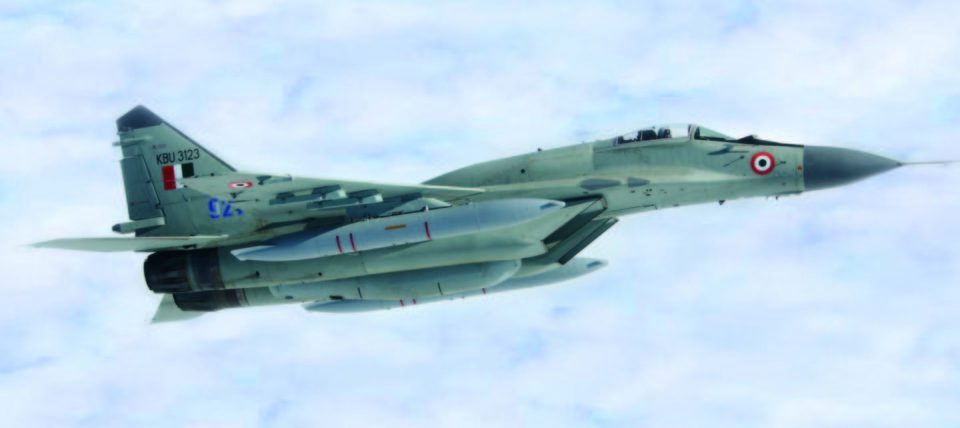By Lt Gen VK Saxena (Retd)
It was reported in the media in Apr 2019 that the Indian Air force (IAF) was in talks with Russia to purchase 21 MiG-29 combat jets which were actually built in late 1980s for the then Soviet Air Force but were never assembled and flown and hence are lying unused.
This article analyses the above deal and brings out the compulsions of the IAF to in go in for an aircraft built 40 years ago, and lying mothballed till now. It also flags some critical imperatives which need to be addressed as a matter of operational expediency sooner than later.
REVISITING THE COMBAT CAPABILITIES OF MIG-29
MiG-29 Fulcrum designed by the Mikoyan Design Bureau, Russia is a twin-engine air superiority fighter which was initially optimised for air-to-air combat role. It was inducted in the Soviet Air Force in 1982 and in the Indian Air Force (IAF) during the period 1986-1991. MiG-29 is still a formidable and a lethal war machine which acts as a second line of defence for the IAF after its Su-30 MKI.
The aircraft has twin RD33 turbofan engines capable of delivering enough thrust to make it a Mach 2+ aircraft at altitude. Its ferry range extends to 2,100 km with a service ceiling of 18,000 meters. The aircraft is optimised both for short range air-to-air-combat, as well as, for Beyond Visual Range (BVR) engagements. For the first role, it has R-60 infrared (IR) homing missile with a range of 8 km, for the latter, it has two Air-to-Air Missiles (AAMs); R-27 Vympl in two range versions of 40 and 80 km and a shorter range R-73 AAM effective up to 30 km.
The aircraft is equipped with IR Search and Track (IRST) Sensors to detect track and engage targets emitting IR radiations. It has a three axes autopilot and enjoys high manoeuvrability even though it does not have ‘Fly-by-Wire’ controls like all contemporary fighters of today.
MiG-29 can execute 9g manoeuvres similar to F-16s and all modern fighters. The aircraft is being operated by 30 nations across the world.
In 2007, the MiG-29 fleet of the IAF was put through a comprehensive upgrade by Russia at a cost of $865 Million. Besides new avionics kits, the upgrade involves the replacement of its outdated N019 Topaz air-intercept radar with a new Zhuk -AME Active Electronically Scanned Array (AESA) radar with a range of 160km.
Besides this, the upgraded version (called MiG-29 UPG) has enhanced BVR capabilities, an air-to–air refuelling capability for higher endurance, higher fuel capacity extending the ferry range of the aircraft by 40 per cent from 2,100 to 3,000 km, a new generation weapon control system with a capability to launch Precision Guided Munitions (PGMs), capability to launch subsonic anti-ship missiles, a higher capability RD 33 turbofan engine, improved cockpit ergonomics featuring an enhanced Hands on Throttle and Stick (HOTAS) design. HOTAS refers to a capability in which a pilot can fly the aircraft without having to remove their hands from the controls.
This combined with the Head up Displays (HUDs) enables the pilot to focus on flying the aircraft, manipulating its sensors and engaging the targets rather than looking for controls in the cockpit. HUD is a transparent display that presents data to a pilot which he can see right in front of him without having to look down at flying instruments.
THE PROPOSED DEAL
In February 2019, a team of senior IAF officers under an Air Marshal which went to Russia to examine the aircraft reported that the airframes were ready and could be delivered in a period of 18 months. The team also reported that they found the aircraft in excellent condition.
Russia has promised to upgrade the above aircraft to UPG standard. Also the price-tag of each upgraded aircraft is reported to be between 285-300 Crore ($40-42 million).
COMPULSIONS OF THE IAF
Currently, the IAF is facing serious challenges as to its depleting combat squadrons’ strength. The decision (read rationale) to go in for the MIG-29 at this point in time needs to be seen in the light of the above challenges. The authorised strength of the IAF is 42 squadrons, a figure it has never touched. The highest it has gone is up to 39.5 squadrons in early 1990s. There was a time when the fighter aircraft ratio between India and Pakistan was almost 3:1. This edge is currently down to 1.4:1. Assuming that the IAF reaches its authorised strength, the said ratio should settle down to about 2:1.
Even the current strength of 31 Squadrons of the IAF needs to be analysed on several fronts in order to correctly assess the challenges hidden behind this number.
The basic issue is that out of the 31 it is only about half the squadrons which are very potent, while the others half are riddled with multiple problems. The potent front-line combat strength is represented by 11 squadrons of Su-30 MK1 (242 aircraft), three squadrons (69 aircrafts) of MiG-29 and three squadrons (49 aircrafts) of Mirage 2000.
Su-30 MKI is indeed a front line air superiority fighter. 40 of these aircraft are getting upgraded by Russia. Such an upgrade will include new AESA radars, onboard computers, electronic warfare (EW) systems and the ability to carry the BrahMos -A supersonic cruise missile.
Mirage 2000 is also a front-line multirole fighter. India signed a $2.1 billion contract with Thales and Dassault Aviation in July 2011 for the upgrade of 51 Mirage 2000 to Mirage 2000 -5 Mk 2 standards. This includes incorporation of night vision capable glass cockpit, upgraded navigation and IFF systems, advanced multi-mode multi-layered radar, fully integrated EW suit besides several other features.
Apart from the above 17 squadrons, the balance 14 comprising of Jaguars (six squadrons, 139 aircraft), MiG-27s (reduced to 2 squadrons, 40 aircraft) and MiG-21s mostly Bison version (six squadrons, 121 aircraft) have issues related to vintage and challenges being faced in the upgrade.
Talking of MiG-21s, the retirement date for the upgraded MiG-21 Bison was earlier projected as 2014-17. This got changed to 2019 and now stands at 2021-22.
The Jaguar fleet which started induction in 1979-80 is also approaching its retirement. It was reported that the ongoing upgrade incorporating the new nav-attack system called Display Attack Ranging Intertial Navigation or DARIN III is also facing severe delays. The serviceability of the 118 jaguar fleet is a concern due to obsolescence, non-availability of spares and the assembly line of Hindustan Aeronautics Limited (HAL) having been shut down.
As regards MiG-27s, though the aircraft started induction in the eighties (last HAL license-produced inducted in 1997), it had fundamental flaws with its R-29 B 300 turbojet engines besides 70’s era avionics With a history of multiple crashes, the last of MiG-27 ML was retired on December 29, 2017, leaving only two upgraded MiG-27 UPG in active inventory which are also due for retirement in a few years from now.
This explains the desperate need for the IAF to make up for the platform losses through fresh inductions.
Unfortunately, on the fresh procurement front, the situation is far from desired. 36 years after the approval of Light Combat Aircraft (LCA) project in 1983, the induction of Tejas is badly delayed. A huge order for 324 aircraft (Tejas Mk 1 -40, Tejas Mk 1A – 83 and Tejas Mk 2 – 201) is many years into the future. As per HAL’s assertion 123 Tejas will be provided by 2024-25.
The requirement of Medium Multi-Role Combat Aircraft (MMRCA) in the much debated MMRCA deal was projected as 126.
However, on firm order are only 36 Rafael Jets which are planned to be inducted in a two year span staring 2019. The Defence Minister has stated that the first jet will arrive in September 2019.
Be that as it may, it leaves a huge void of 90 aircraft in this class.
Talking of voids, it was reported in July 2018 that Ministry of Defence has issued a Request For information (RFI) for 110 fighter aircraft of which 15 per cent aircraft were to be in a flyaway state while the balance 85 per cent were to be made in India by a Strategic Partner/Indian Production Agency with indigenous content of not less than 45 per cent.
While six vendors have responded to the RFI, the selection process is likely to get traction only after the new Govt is in place though multiple rounds of meetings have taken plane with foreign vendors. That this induction is at least 4-5 years into the future is a fair estimate.
CONCLUDING THOUGHTS
Out of the twin-track approach of upgrade of existing platforms and procurement of new, only the former has progressed. There is an urgent need to revive the latter, if the IAF is not to sink any further than the already projected 26-27 squadrons in 8-10 years from now.
Tejas is badly delayed. HAL claim of 123 by 2024 is unlikely. A huge order of 324 aircraft is in the pipeline. Mk 2 must be realised by HAL, Mk 1A expedited.
Selection process for 110 fighter jets must pick up speed now as the new Govt settles down.
Recurring delays in DARIN III upgrade for Jaguar must get addressed.
Taking everything into account, it makes ample sense to acquire additional MiG-29s from Russia, even if they are more than three decades old and IAF needs to pursue the case expeditiously.
This was published by our partner India Strategic in July 2019.





